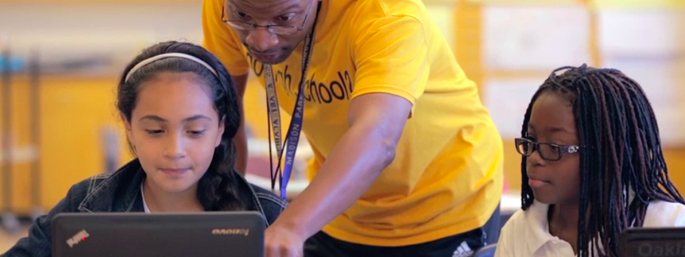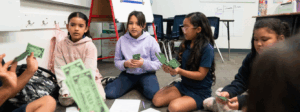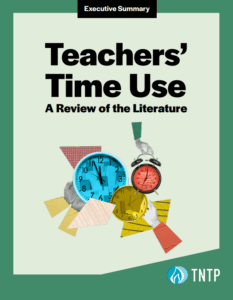Teachers are the most important part of any school’s success—yet many school systems struggle year after year to find the teachers they need to staff their classrooms. The problem isn’t so much an overall teacher shortage as a shortage of the right teachers in the right subjects. For example, education schools might graduate lots of elementary teachers when local schools might really need special education and high school STEM teachers. And since teachers produced by most traditional preparation programs are overwhelmingly white, almost any district looking to increase teacher diversity—which can dramatically increase opportunities for students of color—will struggle to find enough teachers of color.
School systems can address some of these challenges by partnering more closely with local teacher preparation programs—for example, by sharing projections for the number of teachers they’ll need in different license areas well in advance. But what if districts didn’t have to rely solely on outside providers to find and train the teachers they need?
It’s an idea we’ve been exploring since 2015 with funding from U.S. Department of Education’s Supporting Effective Educator Development (SEED) program. We’ve helped school systems in several cities—including Boston, Charlotte, Dallas, San Francisco, and Tulsa—create in-house alternative certification programs based on our successful Teaching Fellows model. As we worked closely with our partners to get the programs up and running, we also planned to transition full ownership to district staff within 2-3 years—ensuring the programs would be sustainable for the long run and not dependent on outside partnerships.
We knew district-run teacher training programs had a lot of upside: for example, districts could customize everything from selection criteria to pre-service training to fit their priorities, expectations, and specific staffing needs from year to year. But because few districts have ever tried this approach, we couldn’t be sure it would work in practice. And we heard skepticism from some observers about whether districts really had the ability to pull this off.
Fortunately, we now have an answer. Last month, the RAND Corporation released results from a study of three of the programs we’ve helped develop. The findings show that in-house certification programs can be a valuable part of any district’s teacher pipeline. Specifically, RAND found that:
- Teachers trained by the programs contributed substantially to the teacher supply in these districts, particularly in hard-to-staff subject areas.
- The programs trained teachers who were more racially diverse than those who came from other sources.
- Teachers certified by the programs were significantly more effective than other first-year teachers in math, at least as effective in English, and just as likely to remain in teaching.
Taken together, the findings about diversity and effectiveness are especially important: they’re the latest proof that we don’t have to choose between high expectations for the teaching profession and a teacher workforce that actually looks like the students it serves. If a startup teacher preparation program can achieve these results, there’s no reason established education schools with access to multi-billion dollar endowments can’t do the same.
While we don’t yet know exactly how the COVID-19 pandemic and its economic aftermath will affect school staffing, it’s safe to say they won’t make things any easier. Now more than ever, federal and state governments should look for ways to support innovative approaches to teacher preparation—including district-run programs.








